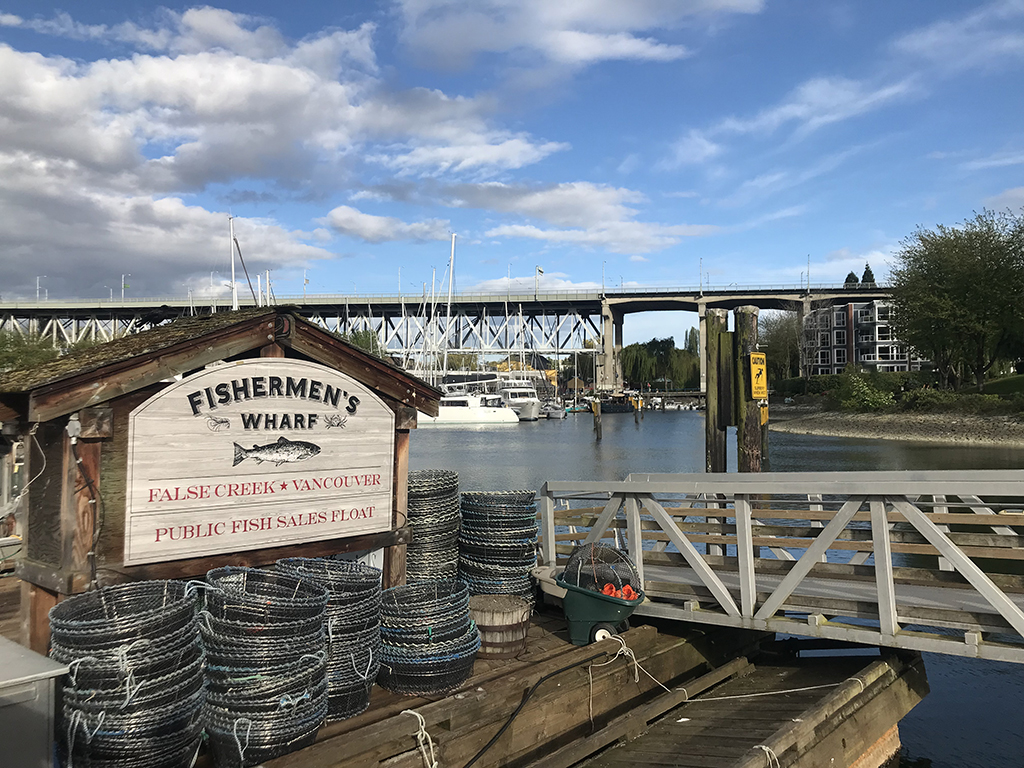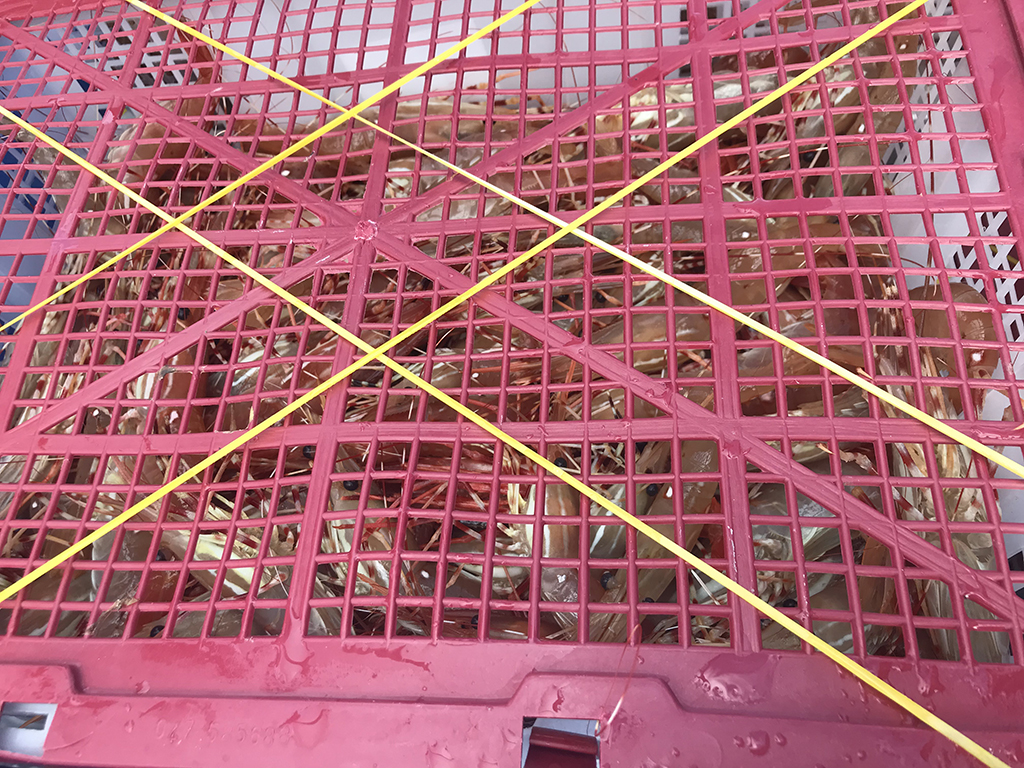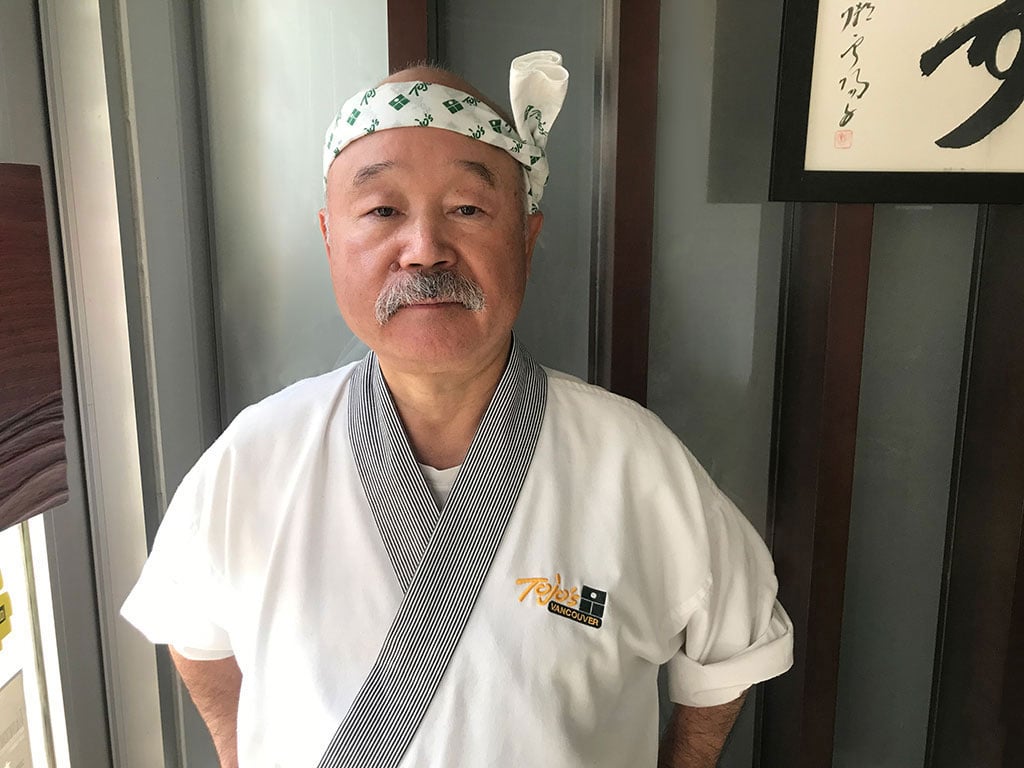Climate change is coming for your favourite sushi and seafood restaurants, Vancouver.
According to a new study from the University of British Columbia, warming water temperatures are changing what seafood is sourced and served in Vancouver. The study reviewed 362 seafood menus from Vancouver restaurants dating back to 1880 and found, because of warming ocean temperatures, we’re ending up with more warm-water-associated species on our plates.
Local waters have warmed around 10 C since the 1880s. Around the world, ocean temperatures rose about 0.23 C per decade between 1970 and 2016 in non-tropical regions, the study noted. This encourages cold-water-loving species to pack up and seek out new environments closer to the north and south poles.
That’s creating a “cascading effect on fisheries and seafood retailers throughout the seafood chain,” the study says.

This is something that Hidekazu Tojo, the chef behind the iconic Japanese restaurant Tojo’s, has been tracking his entire career.
Tojo has been working with Vancouver seafood for the last 51 years (34 of them at his restaurant) and says local seafood selection has dropped by 60 per cent since his early career days.
In the ’70s you could go to your seafood supplier, or Chinatown, and find abalone, crab, salmon, prawns, halibut, perch, rockfish, rock crab, ling cod, sea cucumber, sea urchins, octopus, eulachon, menhaden, Pacific geoduck, scallop, baby clams and oysters, he says.
Today you can buy crab, prawns, salmon, halibut, lingcod, tuna, oysters and sometimes herring or octopus.
“There used to be over 20 items; today it’s about seven,” he says. In other words, just one-third of what was once available. And that was just 50 years ago.
Seafood menus are influenced by a lot of different factors, says William Cheung, the paper's senior author and professor and director of the UBC Institute for the Oceans and Fisheries. There's food culture, chefs’ preferences, aquaculture or farmed seafood availability, and food imports, to name a few.

The study excluded seafood that isn't indigenous to B.C.'s waters, like Atlantic salmon, but wasn't able to control for other factors.
Because of that, Cheung says he was surprised when their data lined up with other studies that tracked local water temperatures and local seafood catches over the years.
With something like climate change and food availability the changes can be subtle, but with large datasets the patterns become clearer, he says.
That may be the story told by local seafood menus, but it feels like a different story out on the water.
Dane Chauvel, a fisher with Organic Ocean, says he’s been fishing Vancouver’s waters for 50-odd years and hasn’t noticed any overall trend in the availability or abundance of seafood, with the exception of salmon.
Over the course of a year an El Niño, a tropical ocean current that slightly warms local waters, might mean you can catch sunfish, mackerel, tuna, and blue, grey and salmon sharks off the coast of Haida Gwaii, he says. But during a cooler year, like this spring, where La Niña brings cooler waters, rainier skies and a slower snowpack melt, you get an anticipated excellent salmon run.
“There seems to be an overall pattern of ocean warming,” Chauvel says. “We’re just not going out and seeing more tropical fish. What I see from year to year depends on the Pacific currents and there hasn’t been a consistent trend.”
Salmon are a special case. Their numbers have been plummeting over the last four decades and it’s not just warming oceans that are impacting the fish. Up until the 1970s Canadian fishers would catch an average of 24 million salmon, according to Fisheries and Oceans Canada. Today the annual catch is closer to 2 million. The conservation organization Pacific Wild says infrastructure like dams and pipelines, as well as diseases spread by open net salmon farms and poor fisheries management, leading to overfishing, have also contributed to the decline.
So there’s less seafood variety available, and what’s left costs more.
“We used to serve all fish. Fish, fish, fish!” Tojo says. A dish would come with a salmon steak, salmon teriyaki and some tuna. Today customers will get half of that seafood portion and a dish will likely also feature vegetables, chicken or tofu.
For example, crab used to be sold for $1.50 per pound in the 1980s — and today it sells for $16 per pound, he says.
“In the ’80s seafood costs were very reasonable, anyone could afford it,” he says. “Today it’s more expensive than meat, which is expensive too.”
King crab is so expensive that Tojo’s no longer serves it. You used to be able to buy it for $5 a pound, but today it sells for more than $50 per pound, he says.
With warming ocean temperatures, new species are also moving into Vancouver’s waters.
Humboldt squid, which can be two metres long, have been showing up in local waters for the last 18 years.
B.C. used to have a large Pacific sardine fishery, which collapsed in the 1940s due to overfishing. Warming waters are making more favourable conditions for sardines, which could make a big comeback, Cheung says.
Chauvel says he can’t consistently find Humboldt squid in local waters and the only local sardines he knows about are the ones his dad, also a fisher, would talk about in stories from back in the day. For now, the only sustainably harvested Humboldt squid Organic Ocean sells is imported from Peru, he says.
When asked what he’d do with an influx in squid and sardines, chef Tojo thinks for a second before laying out his plans to pickle, in a light vinegar, the sardines, and a strategy to press the squid to tenderize it. The biggest thing is to not waste any of the seafood, he says. That goes for using the skin, scales and bones of a fish on an individual basis, and for not over-fishing or over-consuming seafood on a macro scale, he says.
Worst case, he says, if seafood costs continue to rise, he’d do what any smart business owner would do, and pivot.
“Maybe we'd change to an Italian restaurant,” he says with a shrug. “I'm very flexible.” ![]()
Read more: Food, Environment

















Tyee Commenting Guidelines
Comments that violate guidelines risk being deleted, and violations may result in a temporary or permanent user ban. Maintain the spirit of good conversation to stay in the discussion.
*Please note The Tyee is not a forum for spreading misinformation about COVID-19, denying its existence or minimizing its risk to public health.
Do:
Do not: